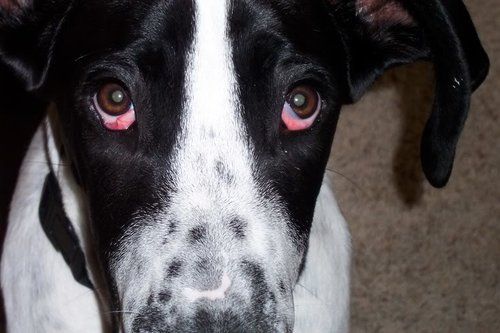Cherry Eye in Dogs
Introduction
Cherry eye in dogs is a fairly common condition that can affect any breed of dog but which is most likely to affect certain breeds. In this article, we’ll take a look at this condition and tell you how to spot the signs of cherry eye and how it will be treated by your vet.
What is Cherry Eye?
Did you know that your dog has a third eyelid that sits at the corner of their eyes? Just out of sight, underneath this eyelid sits a gland that is responsible for producing tears. The only time this gland will be visible is if it pops out and sits in the corner of your dog’s eye. The condition is known as cherry eye as the gland resembles a small cherry.
If you suspect that your dog has developed cherry eye, you must arrange an urgent appointment with your vet. Most dogs will need surgery to move the gland back in place.
What Causes It?
Surprisingly, cherry eye seems to occur without any specific case. Breeds that are more likely to develop the condition include:
- French Bulldog
- British Bulldog
- Great Dane
- Beagle
- Cocker Spaniel
- Shar-Pei
- Bull Mastiff
If you are a breeder of pedigree dogs, it is not generally recommended to breed from dogs that have developed cherry eye in the past.
What Are the Signs and Symptoms?
Unlike other eye conditions that can go unnoticed for some time, cherry eye in dogs is very easy to spot. The small cherry-red, round lump that is associated with this condition will pop out of the corner of your dog’s eye and could obscure their vision slightly. Cherry eye can occur in one or both eyes and usually occurs before your dog’s first birthday.
Treatment Options
Your vet will almost always suggest surgery to correct cherry eye. This will involve sewing the gland back into the pocket within the third eyelid. Unfortunately, the gland has a tendency to pop back out and so more than one surgery may be required. There was once a time when the gland would be completely removed. However, this is no longer the case as doing so can create a condition known as dry eye.
Before and after surgery, your vet will provide you with a number of different eye drop medications. These will include:
- Antibiotic eye drops – these will help to prevent the development of bacterial infections in the eye before and after surgery.
- Lubricating eye drops – these will help to moisten the eyes.
- Anti-inflammatory eye drops – these eye drops will help to reduce any inflammation and swelling in the eye before and after the surgical procedure.
Cost to Treat: $500 to $1,000 per eye
Aftercare Following Surgery
To reduce the chance of cherry eye developing after surgery, there are several precautions you can take:
- Avoid any activities that could cause pressure in your dog’s eyes, such as playing or exercise.
- Ensure that your dog wears a buster collar to prevent him from scratching or rubbing his eye. Your vet will tell you when it is okay to remove it.
- Consider using a harness instead of a normal collar. The collar can put pressure on your dog’s neck which can in turn cause pressure in the eyes.
The Outlook For Your Dog
The great news is that the majority of cases of cherry eye in dogs can be completely cured. However, there are a few points you may wish to note and which your vet should tell you following surgery, If your dog has experienced cherry eye in one eye, they are at a greater risk of developing it in the other eye compared to a dog that has never had cherry eye. Dogs that have had cherry eye may also experience dry eye. Your vet may provide you with eye drops that will help to relieve this problem.
Summary
The treatment for cherry eye can cost several hundred dollars. These costs will increase if the surgery needs to be repeated. Your dog deserves the very best treatment, so why not consider taking out a pet insurance plan so that you have all the support you need to provide them with the highest quality care? A plan from PetInsuranceQuotes.com will help to cover the cost of cherry eye in dogs and many other conditions that can arise out of the blue.
Related Content




















